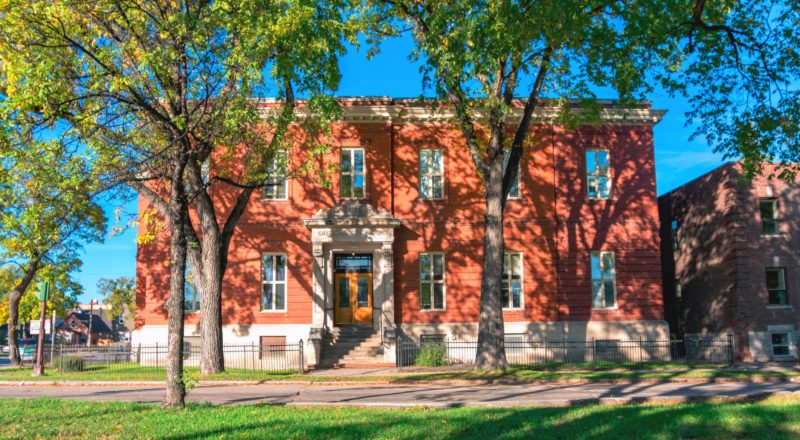
/ Blog
November 17, 2023
Ring! Ring! St. John’s Telephone Exchange Calling
It’s 1878, Winnipeg is barely five years old. Small and young, it is a city full of ambition and confidence, ready to make its mark. The first railway connecting Winnipeg to the wider world will be completed by the end of the year, and the course is set. The city grew from only 1,869 inhabitants when it was incorporated in 1873, to the third-largest city in Canada by 1911, home to over 136,000 folks. However, the railway was not the only special arrival in 1878. A defining piece of technology makes its debut, something that few Winnipeggers could live without nearly a century and a half later. Ring! Ring! It’s the telephone!

A Victorian lady using a telephone around 1880.
Source: B. Bonnafoux (Public domain via Wikimedia Commons)
All kinds of people have been dabbling with inventions to transmit the human voice over the centuries. While often rather basic and impractical, like a string tied between two cups, in the second half of the 19th century there was a race to patent the first marketable telephone in the United States. Ultimately, Alexander Graham Bell won out in 1876, and telephones soon hit the market. Only two years later, Horace McDougall, Manager of the Northwest Telegraph Company, brought two of the devices to Winnipeg.
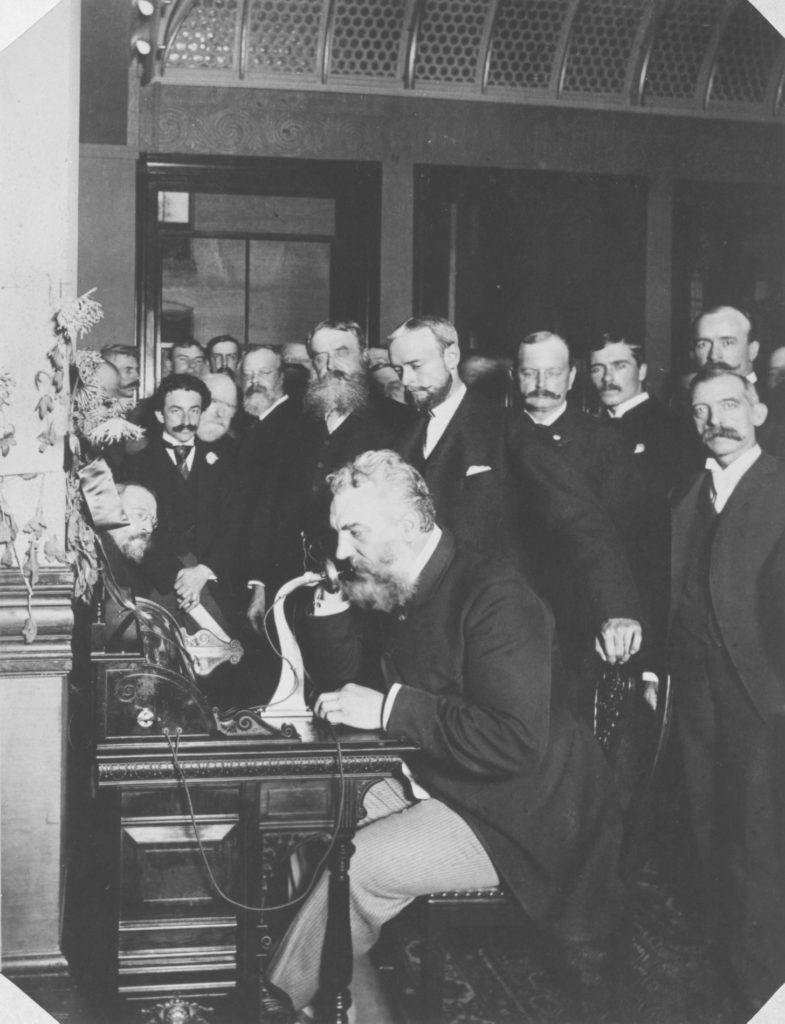
Alexander Graham Bell at the opening of the long-distance line from New York to Chicago in 1892.
Source: Library of Congress (Public domain via Wikimedia Commons)
The first telephones were clumsy devices. Generally set up in pairs, phone “A” would have to be directly connected by wire to phone “B” for communication to take place between the two devices. And neither would be able to communicate with phone “C”, as it was only directly connected with phone “D”. Eventually multiple telephones could be connected to the same wire, allowing you the option to call more than one person, but this system only worked for up to about 10 telephones. In the case of Winnipeg’s first telephones, the telephone in McDougall’s home was directly connected to the telephone in the telegraph office. With both buildings being on the same property at 152 Garry Street, it was more of a novelty than a practicality.
Despite the steep price tag of $60 a year to rent, telephones were catching on in Winnipeg, with 26 in the city only three years after they were introduced. But what took telephones from gimmick to great was the telephone exchange. Instead of connecting two telephones directly to each other, all the telephones in one area were connected to a telephone exchange. The operator at the exchange could then connect your call to any of the other telephones in the exchange, or could even connect you to a different exchange so you could speak with someone further away. The system transformed our ability to communicate with people over vast distances in a timely and accurate manner.
In 1881, Winnipeg’s first telephone exchange was located in the Caldwell Block at McDermot Avenue and Main Street and connected the city’s 26 telephones. The exchange was operated by “telephone men” – young teenage boys. It turned out these “men” did not take their jobs as telephone operators terribly seriously, and by the next year, women were being hired, starting with Ida Cates.
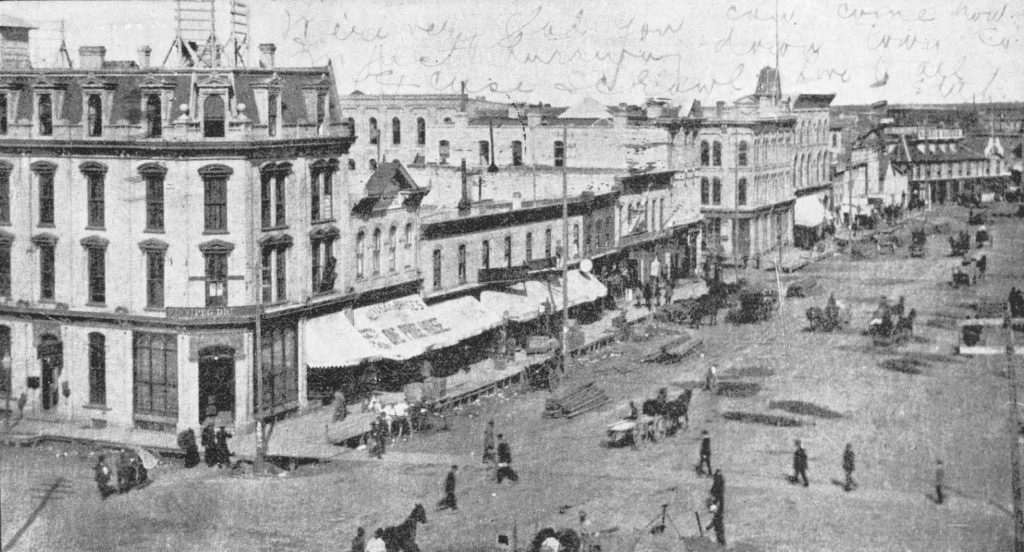
The west side of Main Street looking north from McDermot Avenue, some time between 1881 and 1886. The Caldwell Block, home of Winnipeg’s first telephone exhcnage, is the building on the far left in the foreground.
Source: The Rob McInnes Postcard Collection (PastForward)
As telephones became more popular and widespread, a larger telephone exchange was needed. It moved to a new building at 166 Thistle Street (now Portage Avenue East) in 1896, before moving to another new building at Corydon Avenue and Daly Street in 1909. While this exchange was in the works, the Government of Manitoba purchased the existing telephone companies in the province to create Manitoba Government Telephones in 1908. It was the first provincially owned telephone system in Canada.
Manitoba Government Telephones wasted no time in expanding the provinces’ telephone system, and more telephones meant more exchanges. To better serve the 30,000 customers, the Sherbrook Telephone Exchange at 297 Sherbrook Street opened in 1910, followed by the Garry Telephone Exchange at 474 Hargrave Street in 1911. Imposing buildings designed by Samuel Hooper, the first Provincial Architect of Manitoba, they are both still standing today. Manitoba Government Telephones employed Hooper once again to design its third new exchange building, the St. John’s Telephone Exchange at 405 Burrows Avenue, which opened near the end of 1911.

The Garry Telephone Exchange at 474 Hargrave Street in September 2017.
Source: Jessica Losorata (CC BY-SA 4.0, via Wikimedia Commons)
The St. John’s Telephone Exchange also displays the Classical Revival style, but it is more subdued than Hoopers’ previous two exchanges. This could have been a reaction to its location, better blending into its residential surroundings. Regardless, it is still an elegant building, featuring a red Menomonie brick facade, metal cornice, and carved stone entrance. Above the front door “GOVERNMENT TELEPHONES” is proudly announced in stone with the provincial shield above. An enclosed staircase was added to the west side of the building in 1922 and a large two-storey addition to the east side in 1946.
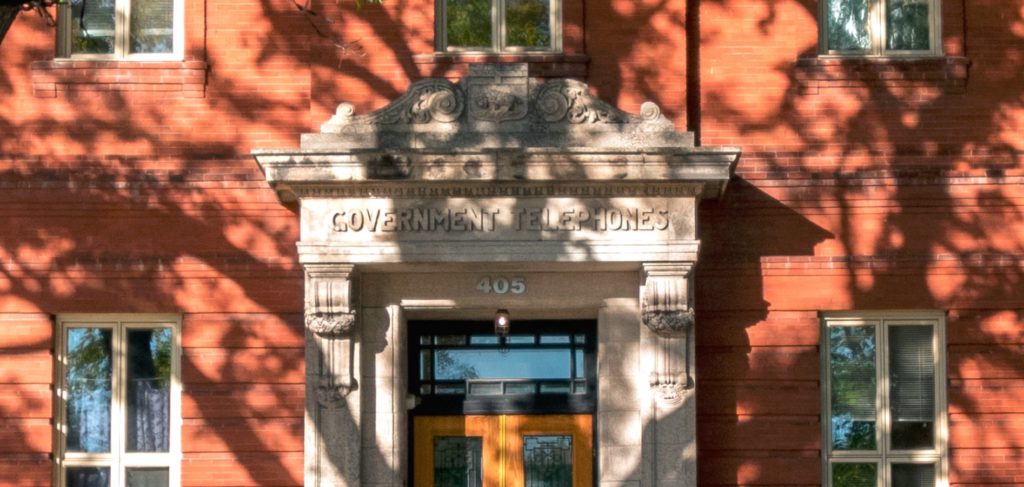
The front entrance of the St. John’s Telephone Exchange at 405 Burrow Avenue in September 2017.
Source: Jessica Losorata (CC BY-SA 4.0, via Wikimedia Commons)
Inside the St. John’s Telephone Exchange, the telephone operators worked hard to ensure Winnipeggers could connect with each other. These women, often called “Hello Girls”, provided all kinds of information beyond connecting calls and were very cherished by their frequent callers. While the job sounded good on the surface, the reality was that it was long hours and low wages. On May 15th, 1919, many of these operators were the first to walk off the job during the Winnipeg General Strike, not showing up for their 7:00 am shifts. These women were joined by rural telephone operators in a sympathetic strike, crippling the province’s phone service for the first week of the strike. The operators were eventually replaced with scab labour, and after the strike ended, many of those who had stood firm for the duration of the strike were fired and blacklisted.
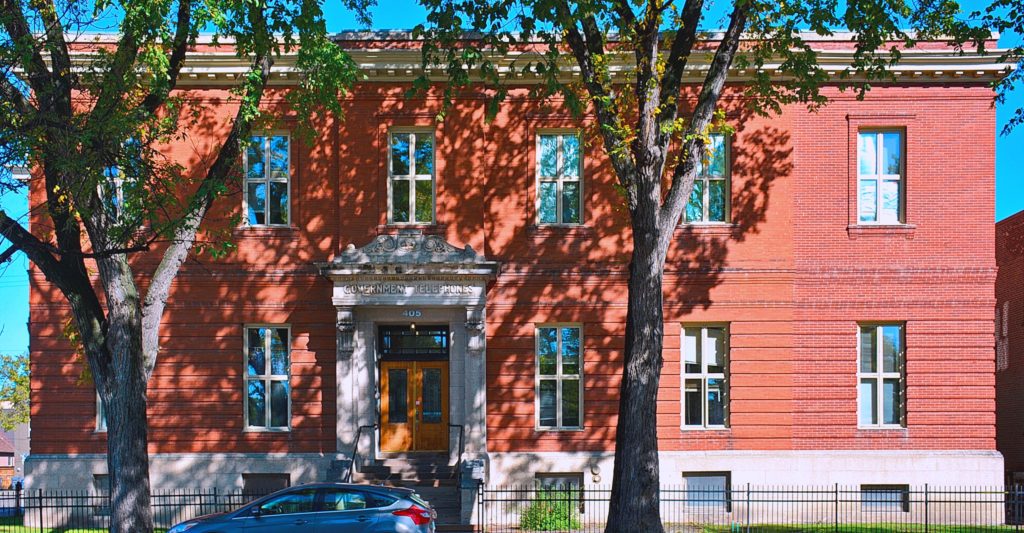
The St. John’s Telephone Exchange at 405 Burrow Avenue in September 2017.
Source: Stan Kucera (CC BY-SA 4.0, via Wikimedia Commons)
In 1922, automatic dialing arrived in Winnipeg and the St. John’s Telephone Exchange was one of the first two exchanges in the city to implement the new technology. This would be followed by many other changes and advancements that transformed telephones over the next 100 years. However, that did not render the St. John’s Telephone Exchange obsolete. The new equipment was brought in and the interior was rearranged, all while new exchanges were built to accommodate the ever-growing demand for telephone service. Eventually, a new exchange was built across the street between 1989 and 1990. Its opening on March 4th, 1990 marked the end of the St. John’s Telephone Exchange’s original function after nearly 80 years of service.
However, the St. John’s Telephone Exchange was not off the hook! It was purchased by the Winnipeg Housing Rehab Corporation, a non-profit organization that develops and manages affordable housing in Winnipeg’s inner city. The organization got to work, adaptively reusing the building as housing, with eight one-bedroom and six two-bedroom suites over two floors. This was a great project for the building, where the interior had been greatly altered over time and carried little historic value; a perfect canvas for a dramatic renovation. It also left the exterior of the building intact, having changed very little over its lifetime aside from two sympathetic additions. The project was celebrated with a conservation award at Heritage Winnipeg’s Annual Preservation Awards in 1996.
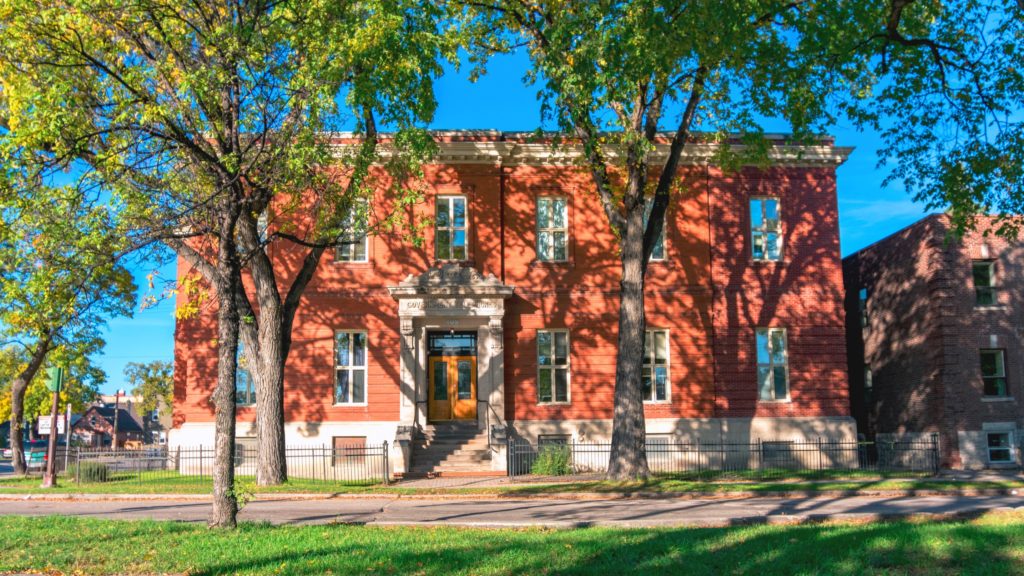
The St. John’s Telephone Exchange at 405 Burrow Avenue in September 2017.
Source: Jessica Losorata (CC BY-SA 4.0, via Wikimedia Commons)
Today the St. John’s Telephone Exchange remains a reminder of the past while serving the needs of the community in the present. A landmark at the corner of Burrows Avenue and Salter Street, it is a remnant of Winnipeg’s boom era in the early 20th century when a bright future was calling. A chic and young cosmopolitan city, it seems only fitting that the latest technology arrived so early in its history. While Winnipeg’s fortunes have changed nearly as many times as telephone technology has, the St. John’s Telephone Exchange has been a constant. Built to last, it is adaptable and resilient – a testament to its quality! The building received municipal heritage designation in 2018, ensuring it is protected and will remain standing, ready to answer the call for the ever-changing needs of its community.
THANK YOU TO THE SPONSOR OF THIS BLOG POST:

Written by Heritage Winnipeg.
SOURCES:
405 BURROWS AVENUE – MANITOBA TELEPHONE SYSTEM ST. JOHN’S EXCHANGE | City of Winnipeg - 2018
Burrows Avenue – 401 & 405 | Winnipeg Housing Rehabilitation Corporation
History of Winnipeg | City of Winnipeg - April 6, 2016
List of Historical Resources | City of Winnipeg - November 13, 2023
Manitoba Provincial Heritage Site No. 83 | Historic Resources Branch - Government of Manitoba
"Number please" - Manual switching | The Communications Museum Trust
Population of the Prairie Provinces | Statistics Canada
St John’s Telephone Exchange Building (Winnipeg Housing Rehabilitation Corporation) | 1919 Strike
telephone | David E. Borth - Encyclopedia Britannica - October 9, 2023
The Telephone Exchange - How calls get from A to B | The Communications Museum Trust
Winnipeg | Alan F.j. Artibise - The Canadian Encyclopedia - September 19, 2023
Women | Unbreakable: The Spirit of the Strike





